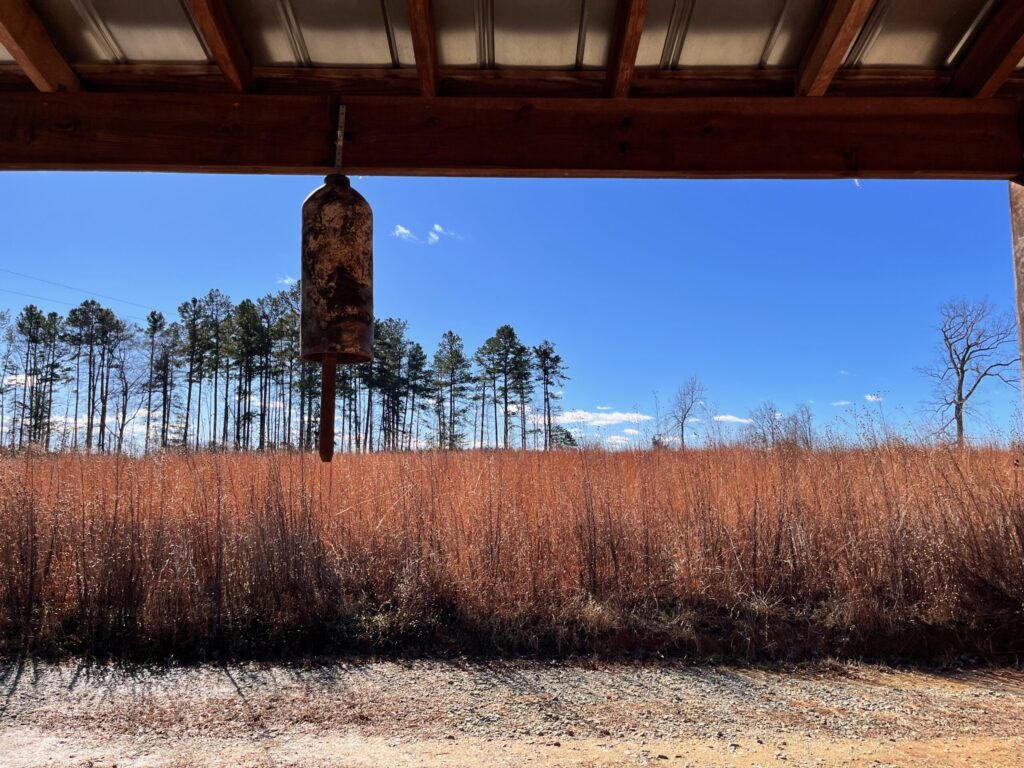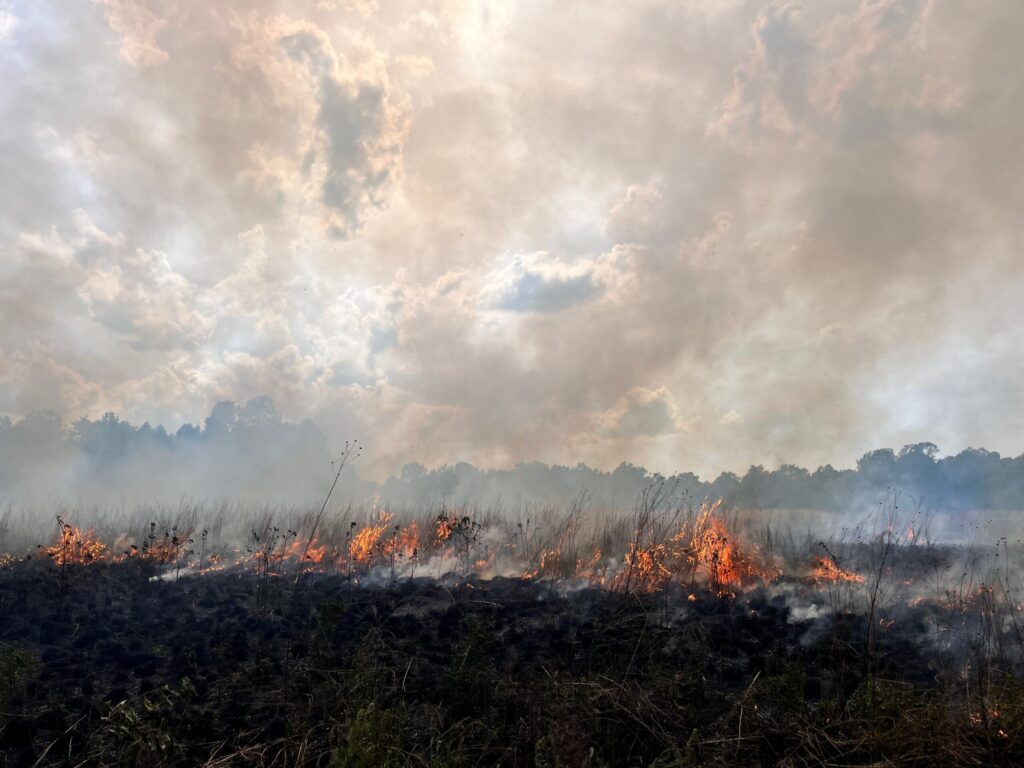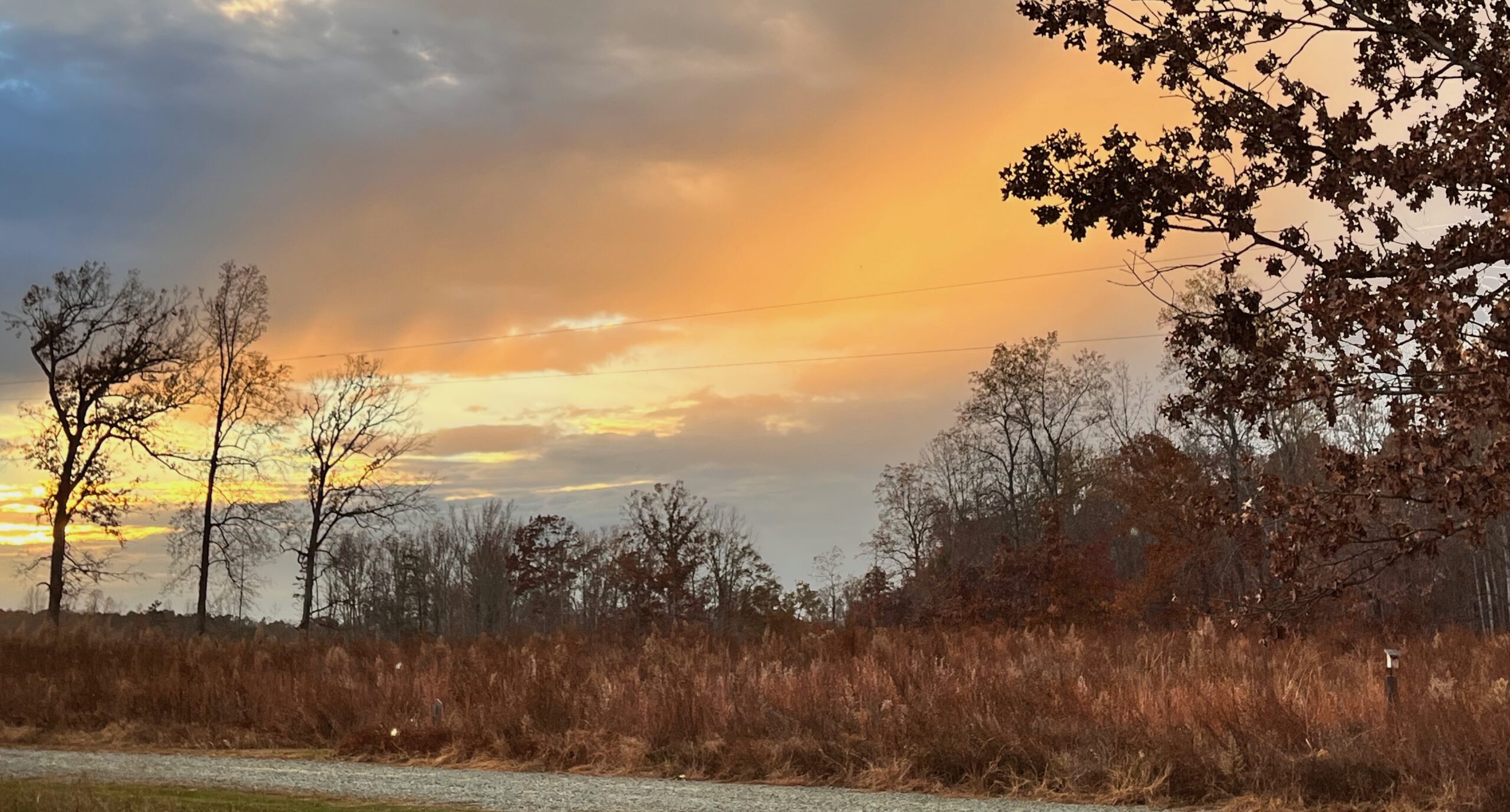In Spring 2025, TLC, Eno River Association, and Bluestem Community NC partnered to protect the 87-acre Bluestem Conservation Cemetery through a conservation easement. Margot Lester, TLC Trail Guide and multi-hyphenate Bluestem volunteer, shares the importance of conserving this magical place – both for its natural habitats and wildlife and the people who are connected to it.

Last month, we gathered at Bluestem Conservation Cemetery in Cedar Grove to officially mark its permanent protection. As a TLC Trail Guide and Bluestem Burial Crew member, this was an especially meaningful day for me, acknowledging a terrific partnership between Bluestem Community NC, Triangle Land Conservancy, and the Eno River Association to ensure it can never be developed. But I also have other reasons to appreciate the agreement. A family friend was one of the first people buried here and she is my roots to this place, which is just 10 or so minutes west of where my family first settled in the 1700s. So Bluestem feels like home in all kinds of ways.
Habitats worth protecting
Protecting Bluestem is vital for all the usual reasons we want to preserve natural spaces. But it’s also a unique space ecologically and conceptually. Open spaces at the 87-acre preserve are being restored to native southeastern grassland, the most endangered habitat in the region. We’re also managing the transitional woodlands and lowland forests to encourage native trees and ground cover.
Land Steward Lionel Reed-Shaw leads our Friday workday volunteers in planting, invasive species removal, trail maintenance, and grave-tending. I’m lucky enough to serve on a small squad of experienced volunteers who work our annual prescribed fires. We burn about a quarter of the property on a rotating basis to mimic the impact of natural lightning strikes and Indigenous land management practices. And these efforts are paying off. We’ve identified 148 bird species, including bobwhites, wild turkeys, and red-winged blackbirds that have struggled from habitat loss.

A mission worth preserving

Bluestem is one of only 13 conservation cemeteries in the country, another reason its protection is crucial. It serves as a model for others interested in the intersectional work of community, conservation, and cemetery—Bluestem’s 3 C’s. In fact, at the end of June, we hosted 20 visitors from the National Funeral Consumers Alliance Biennial Conference in Raleigh to walk the property and discuss natural burials and the conservation cemetery model.
More importantly, the easement gives comfort to the 100 families whose loved ones are buried here, including those in a historical family cemetery dating back to the early 1800s, that the burial ground will be safe from development forever.

If you’ve ever been on one of my walks out at Bluestem, you’ve heard me say it’s a magical place. A place that’s made possible in part by TLC members and donors who know the critical need to preserve and restore local land.
If you haven’t been to Bluestem yet, please come see us soon. Stop by the cabin or look for us in the grassland or the woods. You’ll meet a group of gentle, thoughtful, and caring folks who show up for the community, for the land, and for the grieving.
Thanks for your partnership in protecting this truly special spot.
All photos are by Margot Lester unless otherwise stated.

